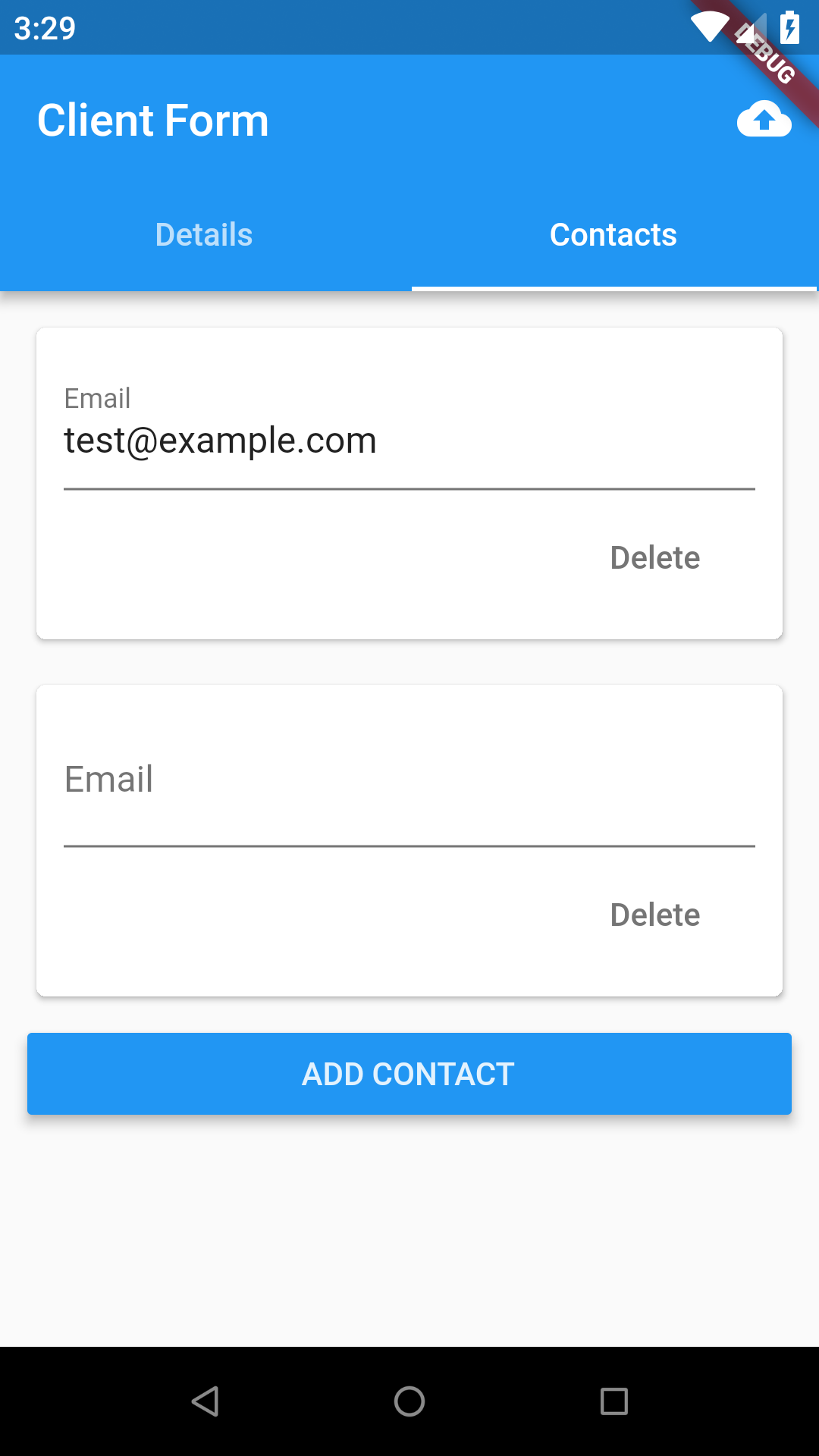

We can do this by declaring FormKey as a field in the State class.Īnother common mistake is to access the FormState before the Form widget is inserted into the widget tree. To avoid this, we should create FormKey once and reuse it across rebuilds. This causes the form to lose its state whenever the widget tree is rebuilt. One common mistake is to create a new FormKey every time the build method is called. While FormKey is a powerful tool, it's important to use it correctly to avoid common pitfalls. This method ensures that the new form field is valid and updates the state of the form accordingly.

To implement dynamic form fields, we can use FormKey to access FormState and call the validate method whenever the user adds or removes a form field. This method runs the onSaved callback of each FormField in the form and saves the current value of the form field. To implement autosave, we can use FormKey to access FormState and call the save method whenever the user changes the value of a form field. For example, we can use FormKey to implement features like autosave and dynamic form fields. In addition to basic form operations like validation and saving, FormKey can be used for advanced operations. If all the form fields are valid, it returns true. If any of the form fields are invalid, it returns false and displays the validation errors. This method runs the validator function of each FormField in the form. When the user taps on the submit button, we can use FormKey to access FormState and call the validate method. It allows us to validate all the form fields at once, save the state of all the form fields, and reset the form to its initial state. This key allows us to access the FormState, which holds the state of the form.įormKey plays a crucial role in managing the state of a form in Flutter. In Flutter, FormKey is a type of GlobalKey that uniquely identifies a Form widget in the widget tree. It allows for more flexibility and scalability. However, if your form is complex and requires advanced features, using a state management solution might be a better choice. If your form is simple and doesn't require advanced features like autosave or dynamic form fields, using a GlobalKey might be sufficient. Choosing the Right Approach for Your ApplicationĬhoosing the right approach for form state management depends on the requirements of your application. These libraries allow us to lift the state to a higher level in the widget tree and access it from anywhere in the widget tree. A GlobalKey uniquely identifies a Form widget in the widget tree and allows us to access the FormState.Īnother approach is to use a state management solution like Provider or Riverpod. The most basic approach is to use a GlobalKey. There are different approaches to form state management in Flutter.

Different Approaches to Form State Management This is useful in scenarios where we want to clear the form after successful submission or when the user taps on a reset button. Third, state management allows us to reset the form to its initial state. We can use FormState to save the current value of all the form fields. This is especially useful when we want to implement features like autosave. Second, state management allows us to save the current state of the form. If any of the form fields are invalid, we can display validation errors for those fields. When a user taps on the submit button, we can use FormState to validate all the form fields at once. First, it allows us to validate all the form fields collectively. State management in forms is crucial for a few reasons. Importance of State Management in Forms The state of a form is held in a FormState object. The state of a form includes the current value of all the form fields, whether the form has been touched, whether the form is valid, and so on. In Flutter, managing the state of a form is a critical aspect of form handling. Understanding Flutter Form State Management This data includes user input, validation errors, and more. Each form field has a corresponding state class that holds data related to that field. The Form widget acts as a container for these form fields, managing their states collectively. A Flutter form is a conglomerate of multiple form fields, each with its own state and validation logic. In this blog, we will explore the concepts of Flutter forms.įlutter forms are more than just a collection of TextFields. They serve as the conduit between the user and the application, providing a platform for users to interact, input data, and even manipulate the application's behavior. In the journey of a Flutter developer, it becomes clear that forms are a crucial component of any application.


 0 kommentar(er)
0 kommentar(er)
